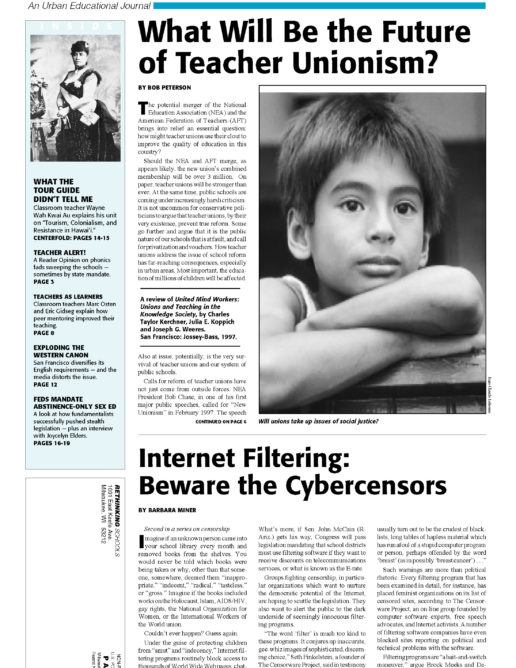Preview of Article:
A Look At the ‘Sex Respect’ Curriculum
Consider the story of “LaWanda,” a homely teenager being raised by a single mother who is pressured by her more sexually experienced boyfriend, “Calvin,” into having sex. Soon after, Calvin dumps LaWanda and takes up with another girl.
“LaWanda was torn apart by the pain of being left alone by the men in her life, first her father and now Calvin,” continues the story. “How would she ever be able to trust another man again?”
Meanwhile, teenagers with names like “Chris” and “Cindy” help each other say no to sex.
Welcome to “Sex Respect,” the most popular of the abstinence-only sexuality education curricula, where racial bias and gender stereotyping are just two ways of getting teens to “Just Say ‘No'” to sex.
The story of “LaWanda” and “Calvin” reinforces a number of negative stereotypes, according to “Sex, Lies, and Politics,” a 1997 report on abstinence-only curricula in California Public Schools by the Public Media Center and the Applied Research Center in Oakland. According to the report, these stereotypes include: “that African Americans are promiscuous; that African-American men are uncaring, unfaithful and irresponsible; and that African-American women have grown up in troubled homes, aren’t physically attractive, and need male attention for self-esteem.”</p

